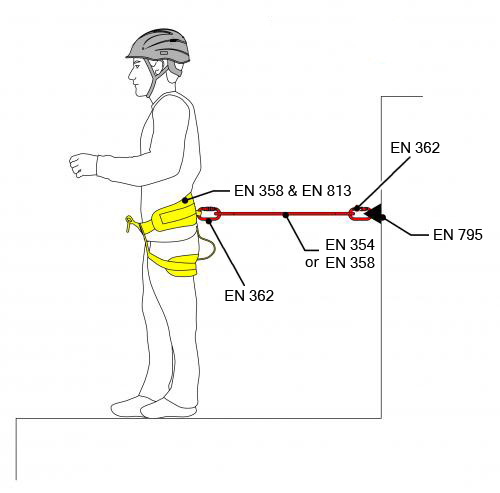- Total 0,00 SEK
System Function:
- Prevents a free fall from height by restricting where the user can move.
- Not approved for arresting a free fall.
- Should not be used in situations where the user needs support from the harness, i.e., when the system is loaded (e.g., work on sloped roofs, rope access, etc.).
- The system is assembled so that the total length of the connector, combined with the position of the anchor device, prevents the user from reaching an area where a free fall could occur.
System Components:
-
Anchor Device in accordance with EN 795, including one of the following:
- Type A – Permanent anchor point
- Type B – Temporary anchor point
- Type C – Horizontal lifeline system with flexible line (wire rope or kernmantle rope), permanent or temporary
- Type D – Horizontal lifeline system with rigid rail, permanent installation
- Type E – Counterweight anchor device, maximum 15° inclination
-
Harness in accordance with one of the following:
- EN 358 Work Positioning Belt
- EN 813 Sit Harness
- EN 361 Full Body Harness
- Recommendation: An EN 361 Full Body Harness with integrated EN 358 Work Positioning Belt, as any rescue operation in practice requires an EN 361 full body harness. Performing a rescue by connecting only to an EN 358 belt is very difficult and results in a horizontal position of the casualty. A full body harness allows connection at the chest, back, or even shoulder straps, ensuring an upright rescue position.
- Connector that links the harness to the anchor device, in accordance with:
Note: Connectors must be attached to both the anchor device and the harness using a connector in accordance with EN 362. If the user connects directly with an EN 362 connector to a static structural element (e.g., scaffolding tube, ladder rung, or truss brace), and not to an EN 795 anchor device, it is critical to ensure the minimum structural strength. The required minimum strength is specified in the connector’s user instructions and is at least 10 kN (1000 kg).


